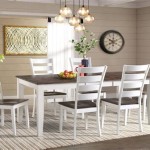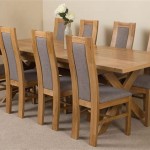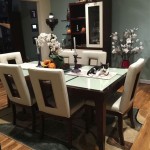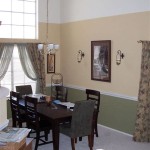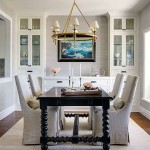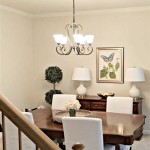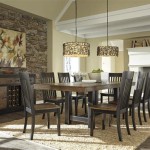Pictures for Dining Room Walls
The dining room often serves as a central gathering place in a home. It’s where families share meals, entertain guests, and create lasting memories. Choosing the right décor, especially the artwork adorning the walls, plays a significant role in shaping the atmosphere and ambiance of this important space. This article explores various considerations for selecting pictures for dining room walls, encompassing stylistic choices, practical aspects, and the impact of different art forms.
One of the primary factors to consider is the overall style of the dining room. A formal dining room with traditional furniture might benefit from classic artwork such as landscapes, still lifes, or portraits. These genres often convey a sense of elegance and sophistication, complementing the room's existing aesthetic. Conversely, a more modern or minimalist dining room might be better suited to abstract art, geometric prints, or contemporary photography. These styles can add a touch of dynamism and visual interest to a clean and uncluttered space.
The color palette of the dining room also influences the choice of artwork. Consider selecting pictures that either complement or contrast with the existing colors in the room. Complementary colors, located next to each other on the color wheel, create a harmonious and balanced feel. Contrasting colors, located opposite each other on the color wheel, can add a vibrant and energetic touch. It’s helpful to consider the psychological impact of different colors. Warm colors like reds, oranges, and yellows can stimulate appetite and conversation, while cool colors like blues and greens can create a calming and relaxing atmosphere.
Beyond color, the subject matter of the artwork can significantly impact the dining room's ambiance. Images of food, such as vibrant depictions of fruits, vegetables, or prepared dishes, can enhance the dining experience and create a sense of abundance. Nature scenes, including landscapes, seascapes, and botanical prints, can evoke a sense of tranquility and connection to the outdoors. Abstract art can spark conversation and add a touch of intellectual stimulation. Ultimately, the subject matter should be chosen to reflect the homeowner’s personal tastes and the desired atmosphere of the dining room.
The size and scale of the artwork are crucial elements to consider. A large, statement piece can serve as a focal point and anchor the entire room. Smaller pieces can be grouped together to create a gallery wall, adding visual interest and showcasing a variety of artistic styles. When hanging artwork above a dining table, it's generally recommended that the bottom of the frame be approximately 8-10 inches above the tabletop. This ensures that the artwork is at a comfortable viewing height and doesn't interfere with conversation or obstruct the view across the table.
Framing plays a vital role in presenting artwork effectively. The frame should complement both the artwork itself and the surrounding décor. Simple, understated frames can allow the artwork to take center stage, while more ornate frames can add a touch of elegance and sophistication. The material of the frame, such as wood, metal, or plastic, should also be considered in relation to the overall style of the dining room.
Beyond traditional framed prints and paintings, other art forms can be incorporated into the dining room décor. Photographs, both personal and professional, can add a personal touch and capture cherished memories. Tapestries, textiles, and other fabric art can introduce texture and warmth to the space. Sculptures and three-dimensional art can add depth and visual interest. Even decorative plates or vintage posters can serve as unique and eye-catching wall décor.
Lighting is an essential aspect of showcasing artwork effectively. Natural light can enhance the colors and textures of the artwork, while artificial lighting can be strategically used to highlight specific pieces. Consider using directional spotlights to illuminate key artworks or incorporating dimmer switches to adjust the lighting based on the time of day and desired ambiance.
When selecting pictures for a dining room, it's important to consider the practical aspects of the space. For example, if the dining room is prone to humidity or temperature fluctuations, it's best to avoid delicate artworks that could be damaged by these conditions. Similarly, if the dining room is a high-traffic area, it's advisable to choose durable and easy-to-clean artwork.
Ultimately, the best pictures for a dining room are those that reflect the homeowner's personal style and create a welcoming and enjoyable atmosphere. By carefully considering the various factors discussed above, individuals can select artwork that enhances the aesthetic appeal of their dining room and contributes to a positive dining experience.

10 Formal Dining Room Ideas From Top Designers

11 Modern Dining Room Ideas Designs For An Updated Look Decorilla Online Interior Design

Living And Dining Room S Y Home One Brick At A Time

Cate S Cozy San Francisco Nest

80 Elevated Dining Room Ideas Perfect For Entertaining In 2025

Living And Dining Room S Y Home One Brick At A Time

The Best Dining Room Paint Color

Dining Room Wall Décor Transform Your Space With These Stylish Ideas

Modern Dining Room Ideas Exquisite Interior Design Porto Portugal Boca Do Lobo

80 Elevated Dining Room Ideas Perfect For Entertaining In 2025
See Also

